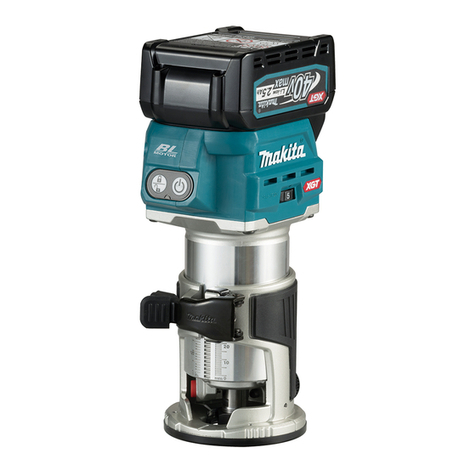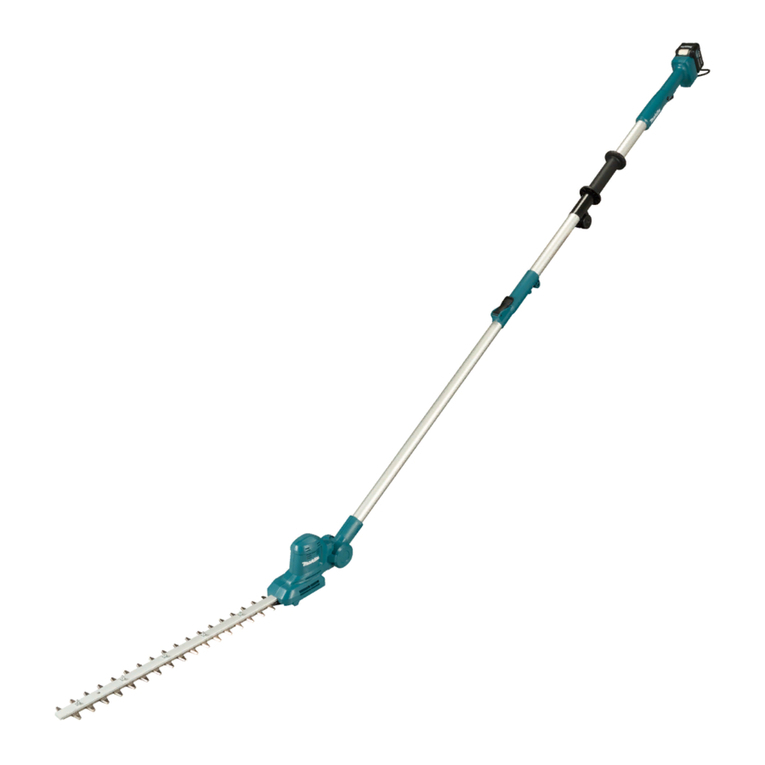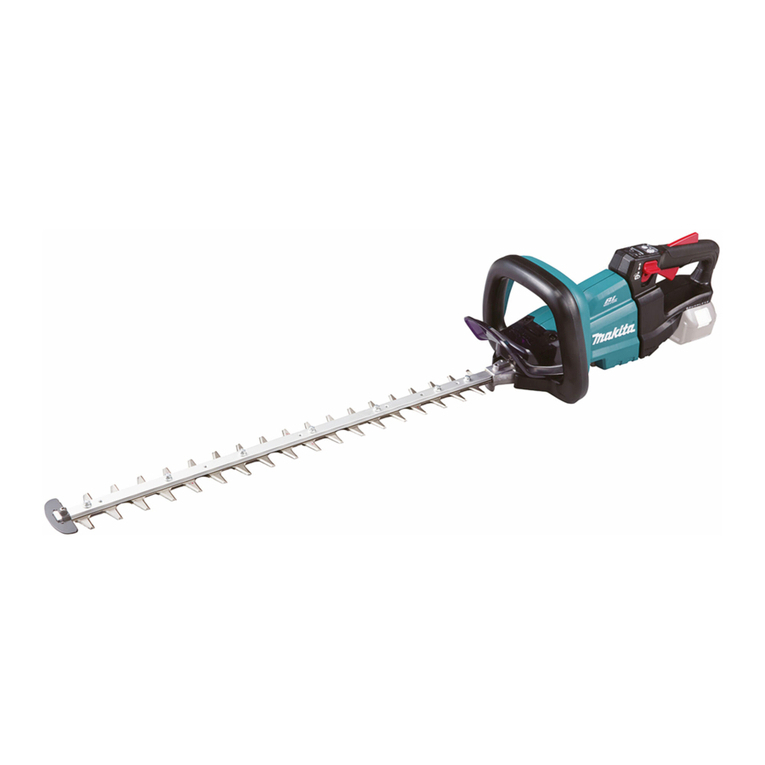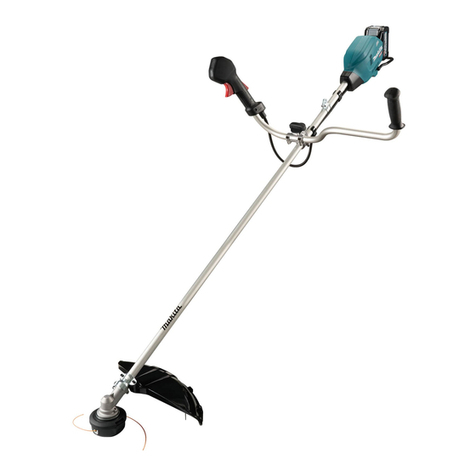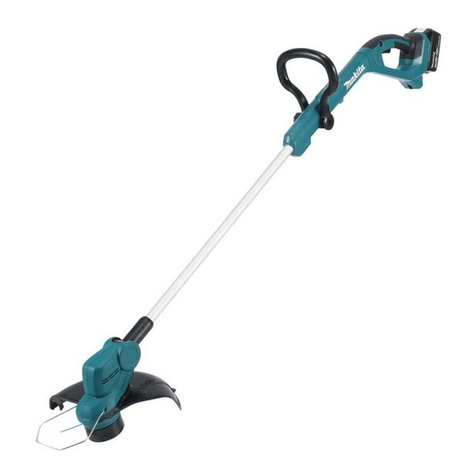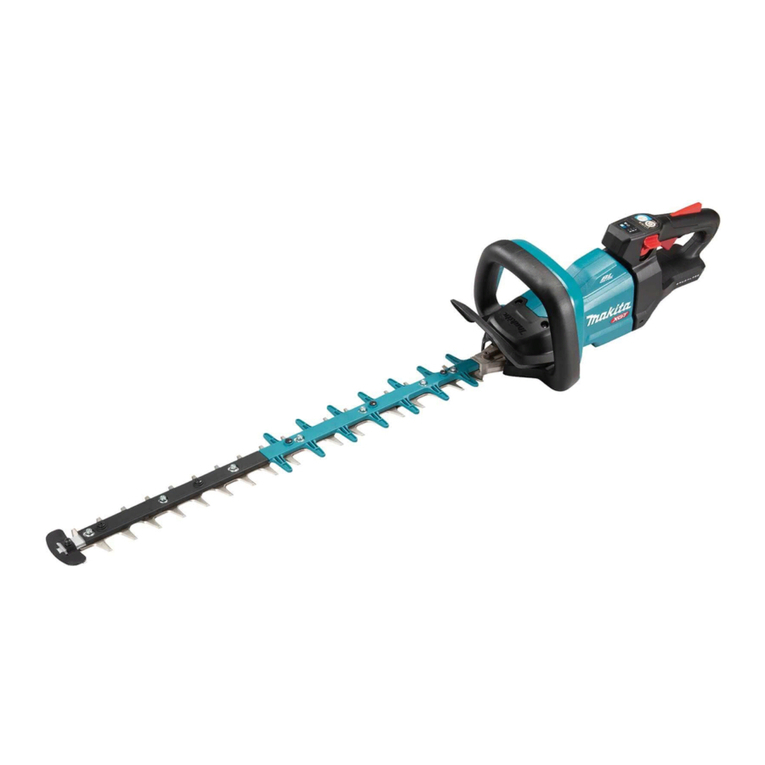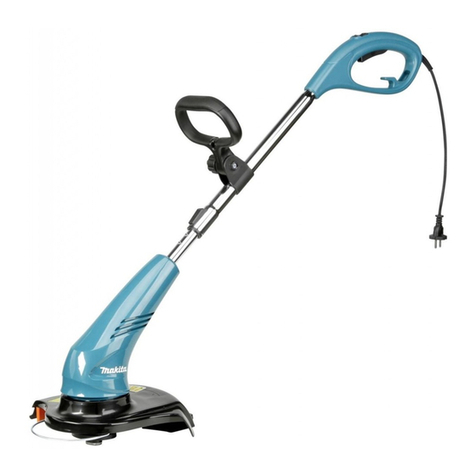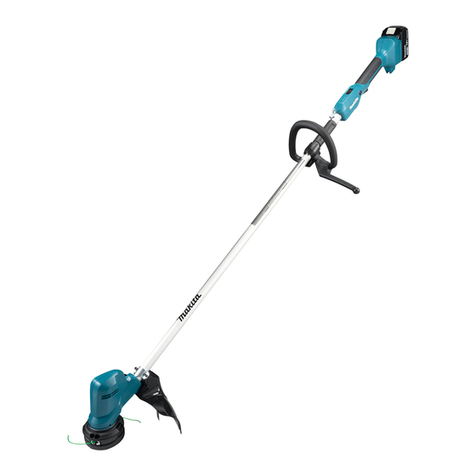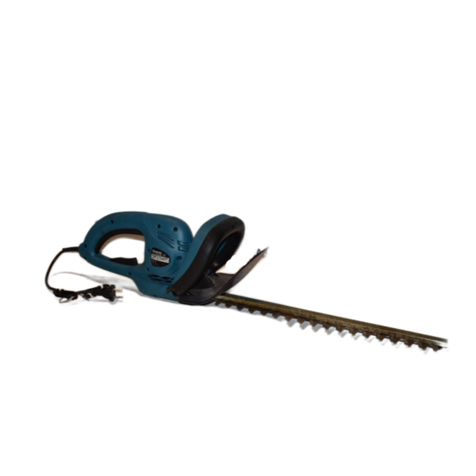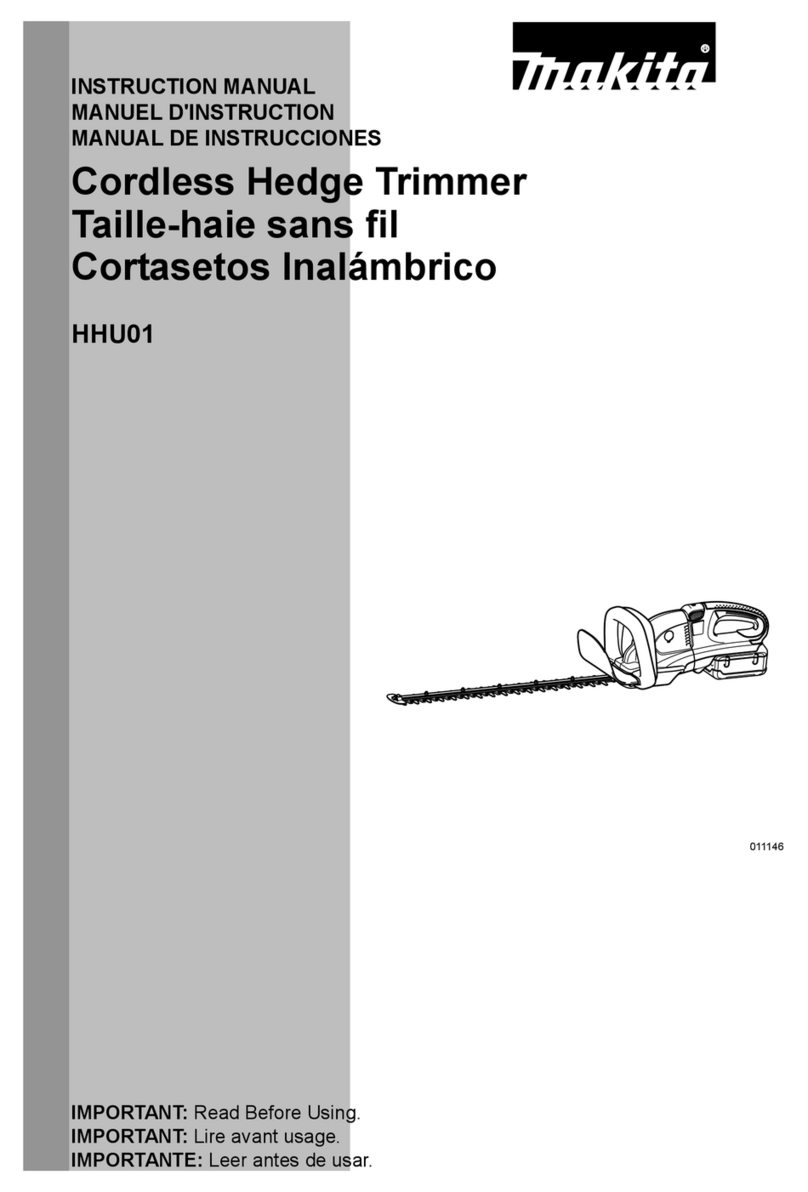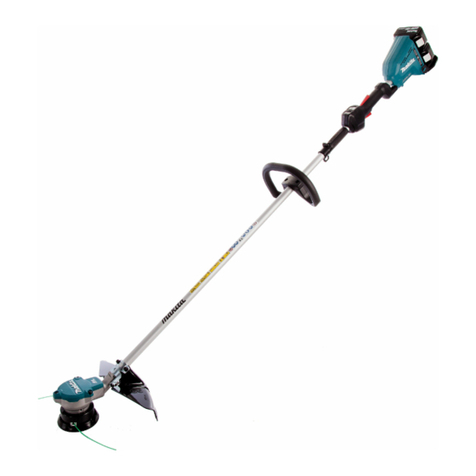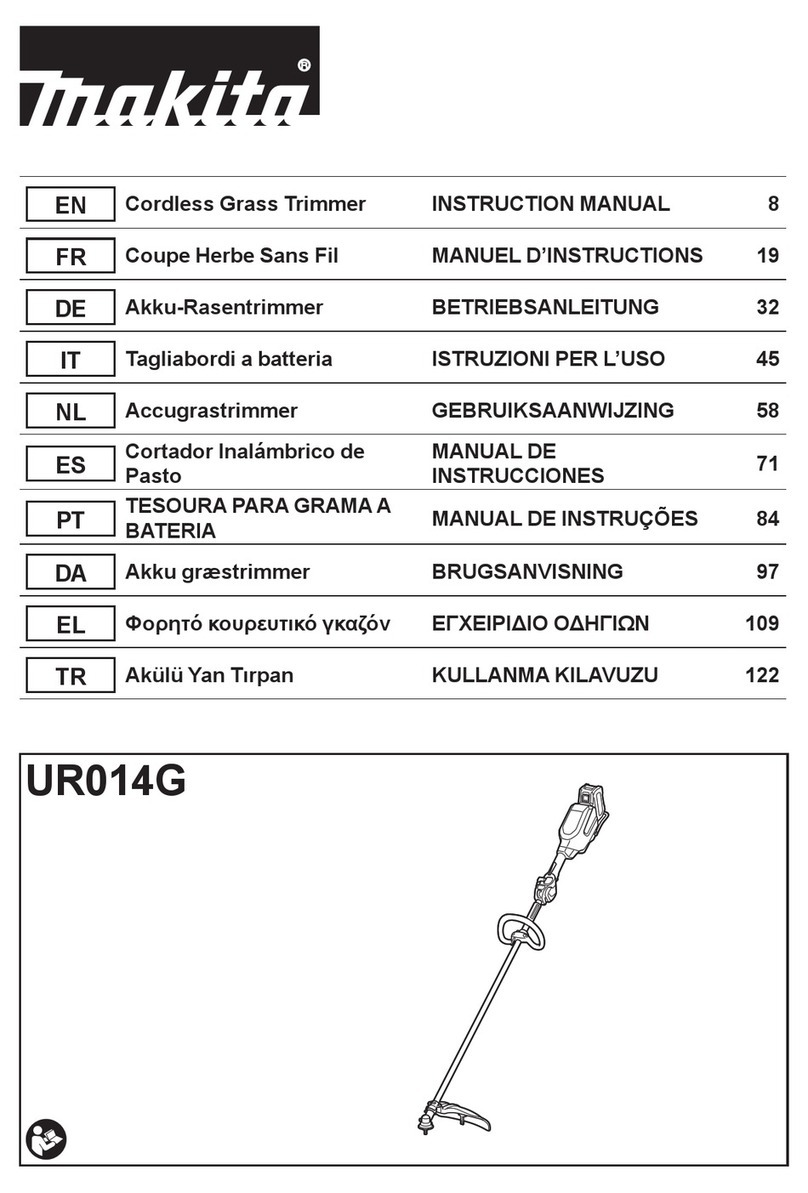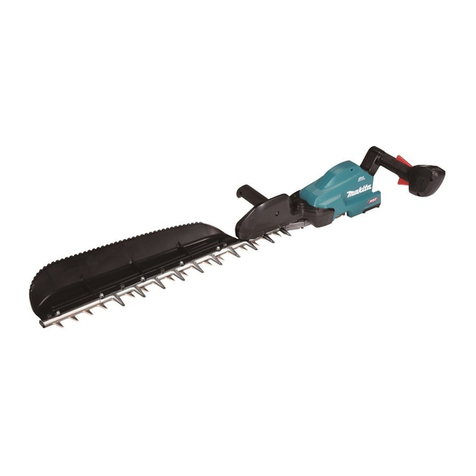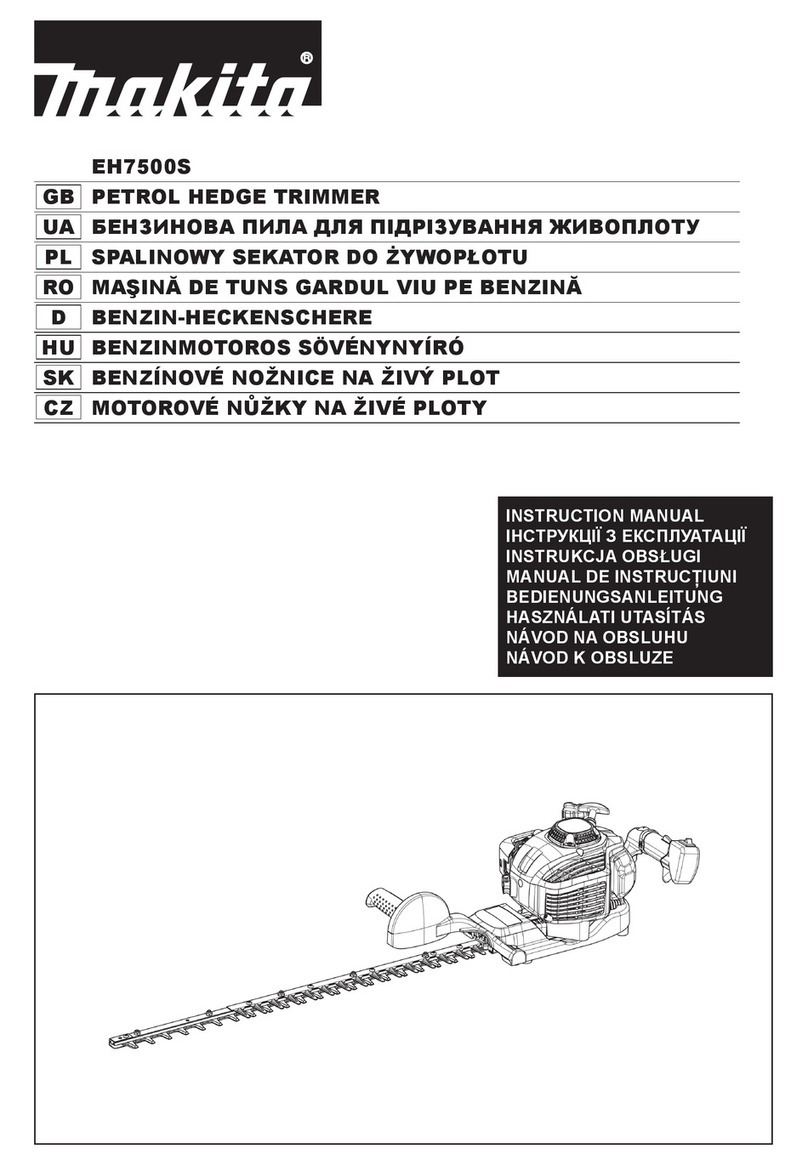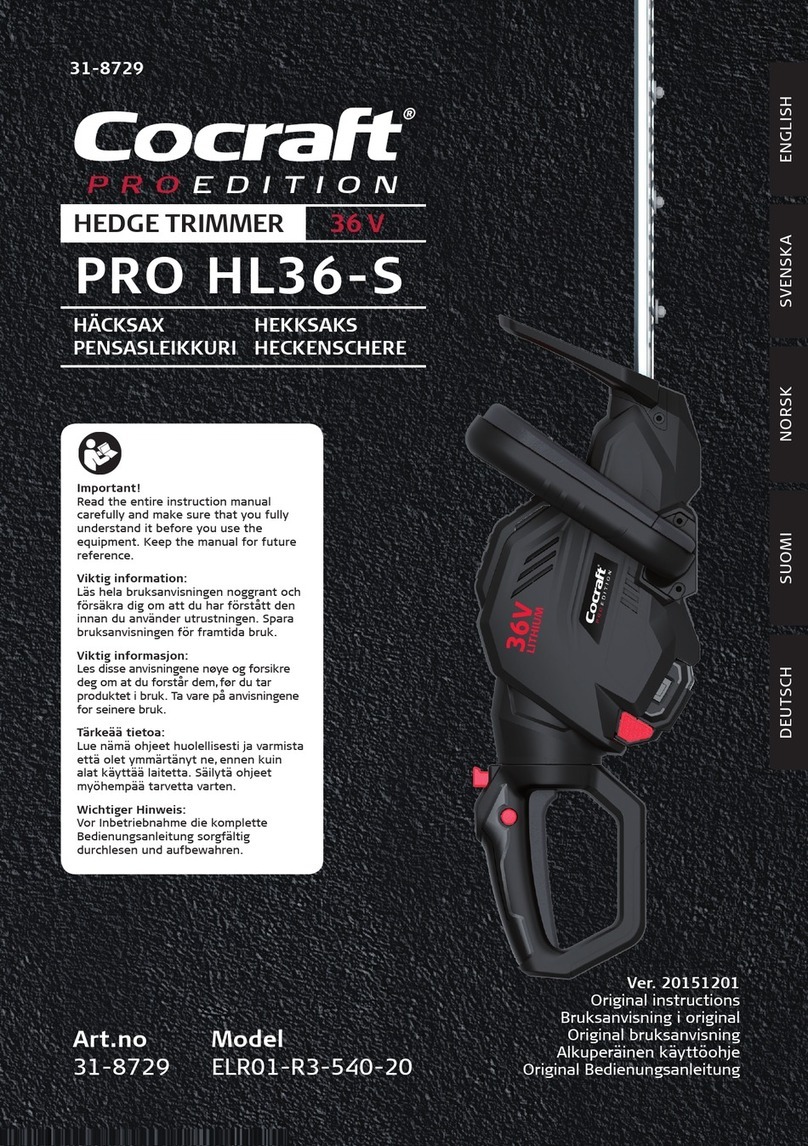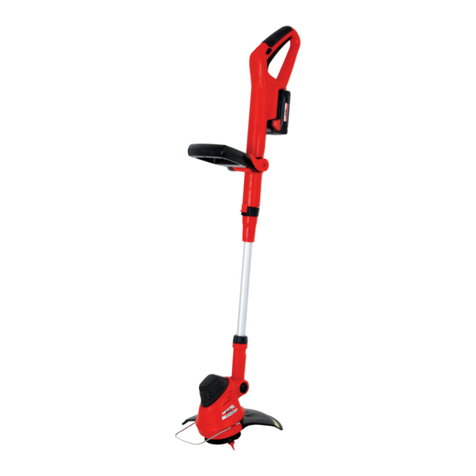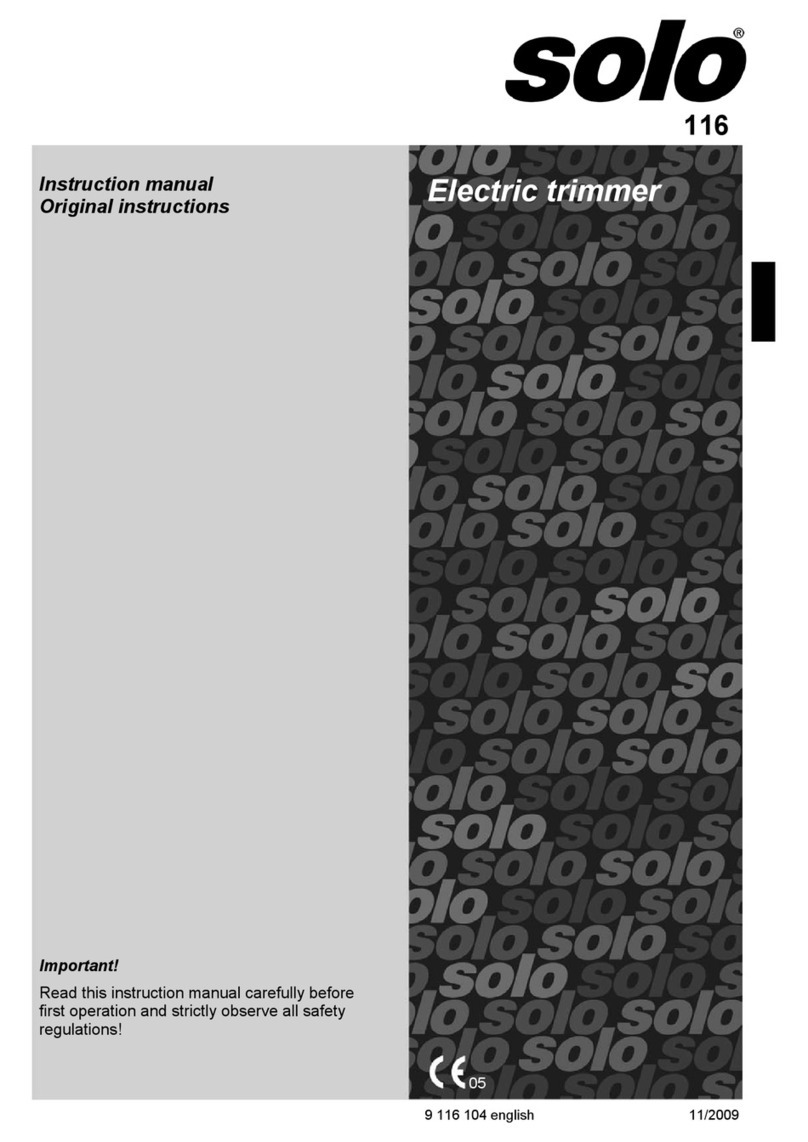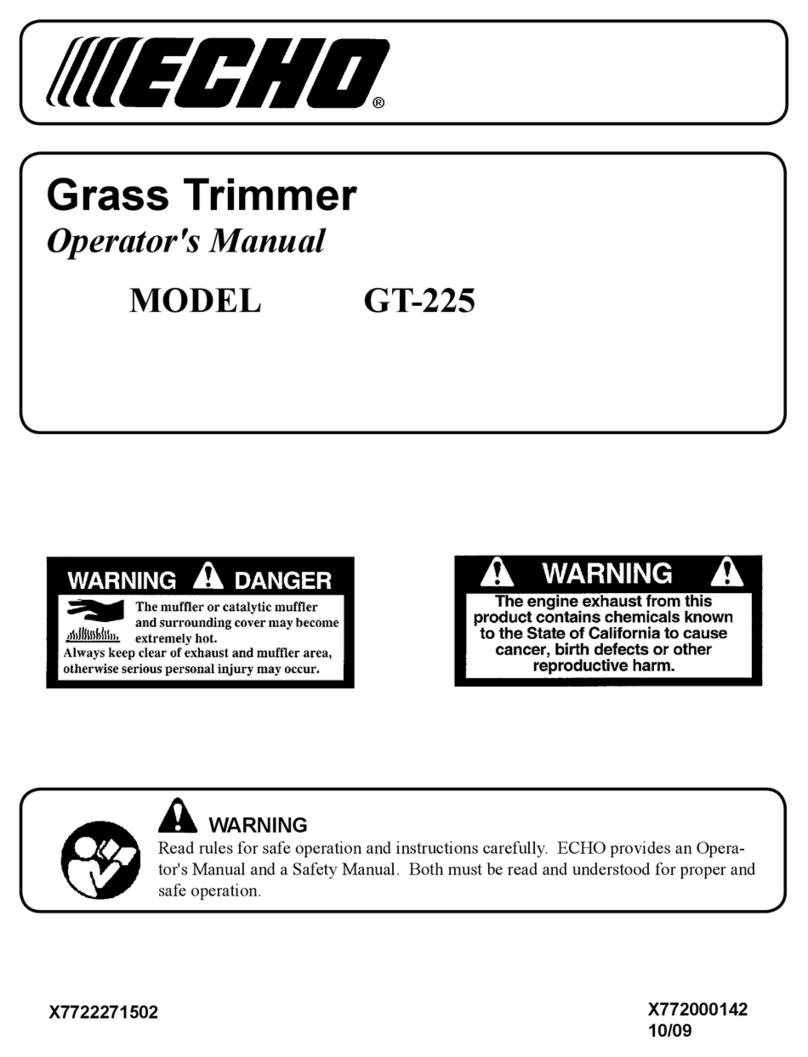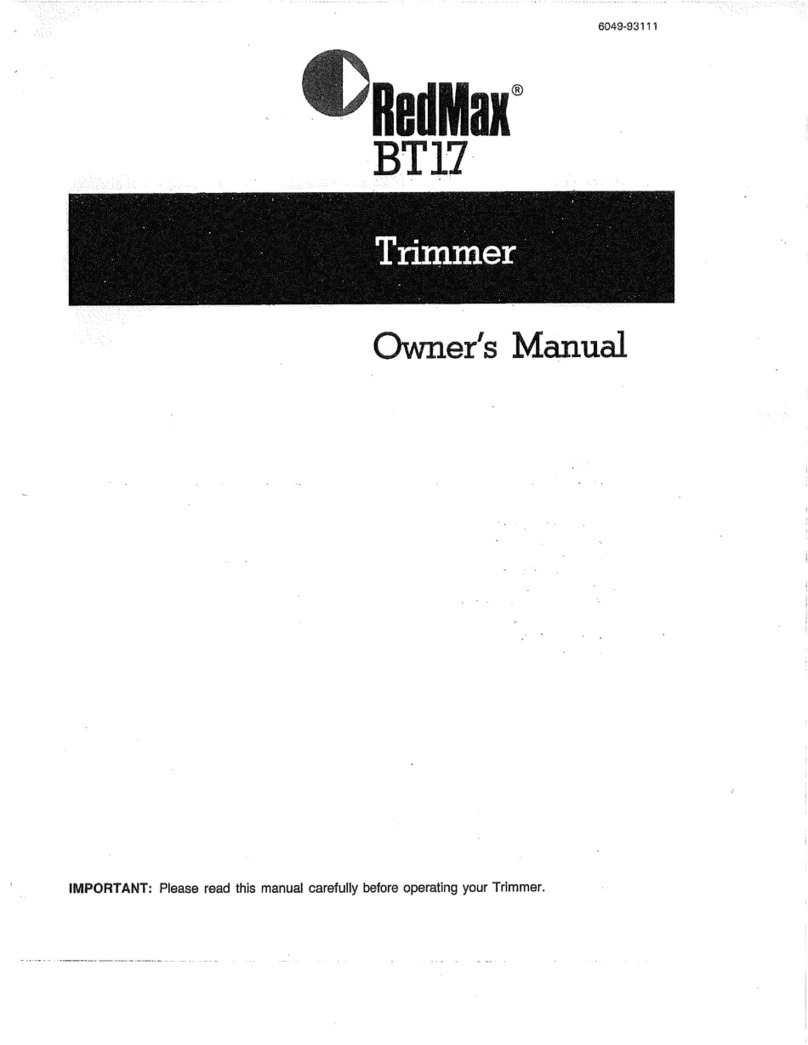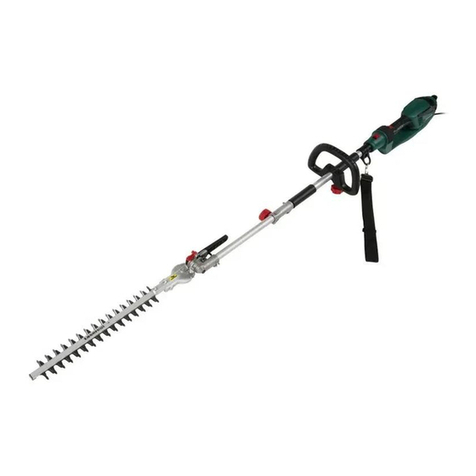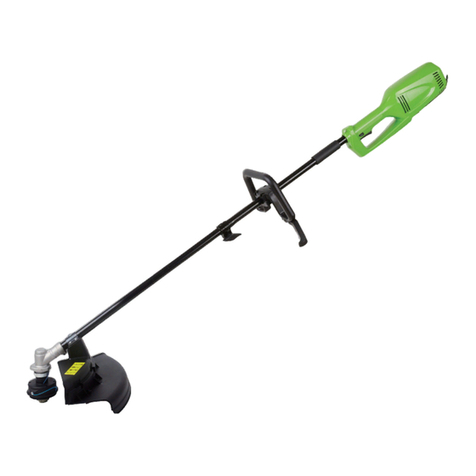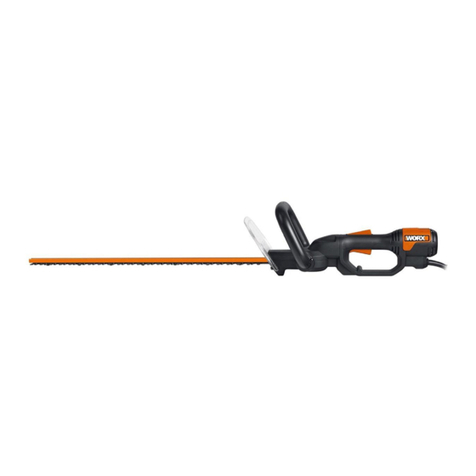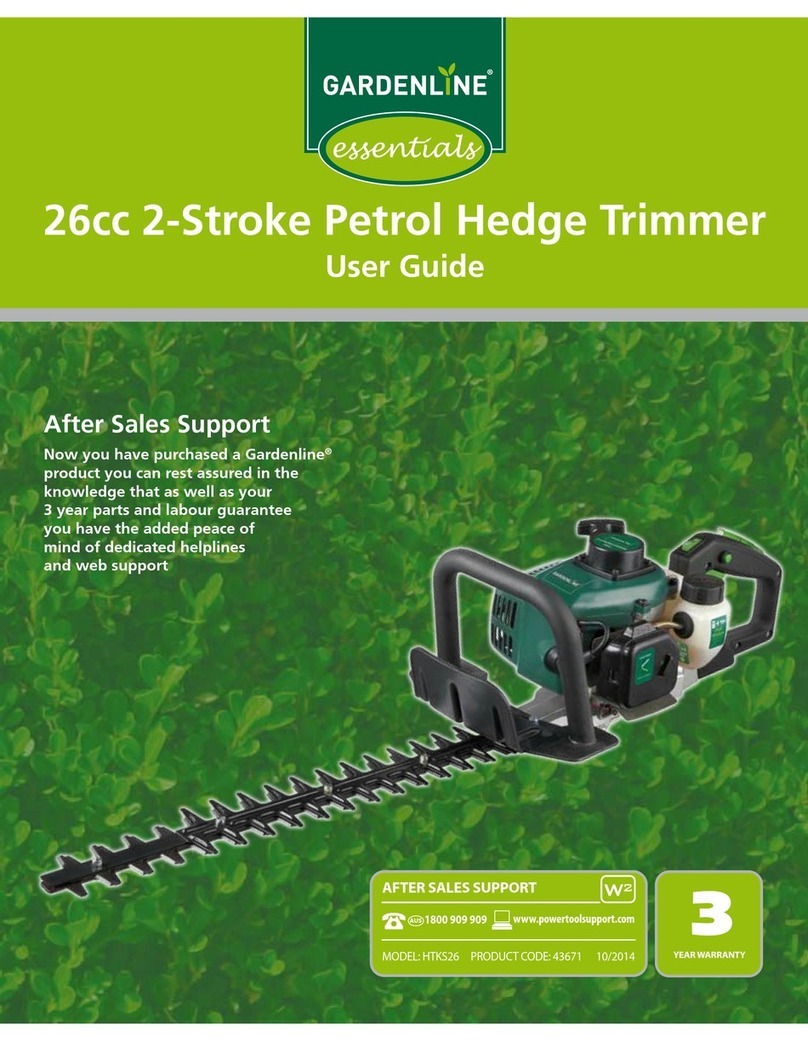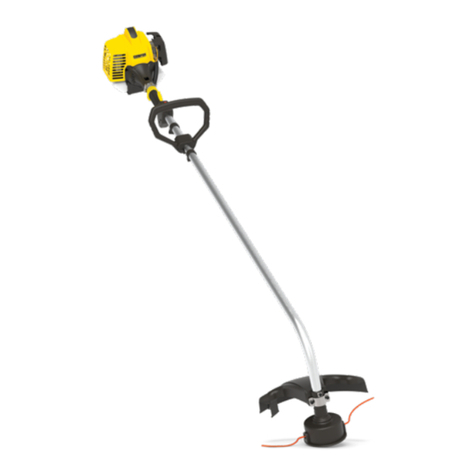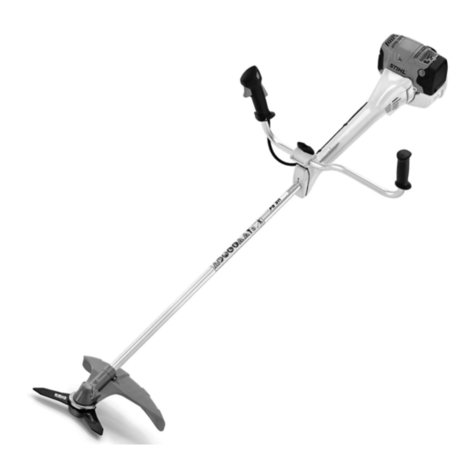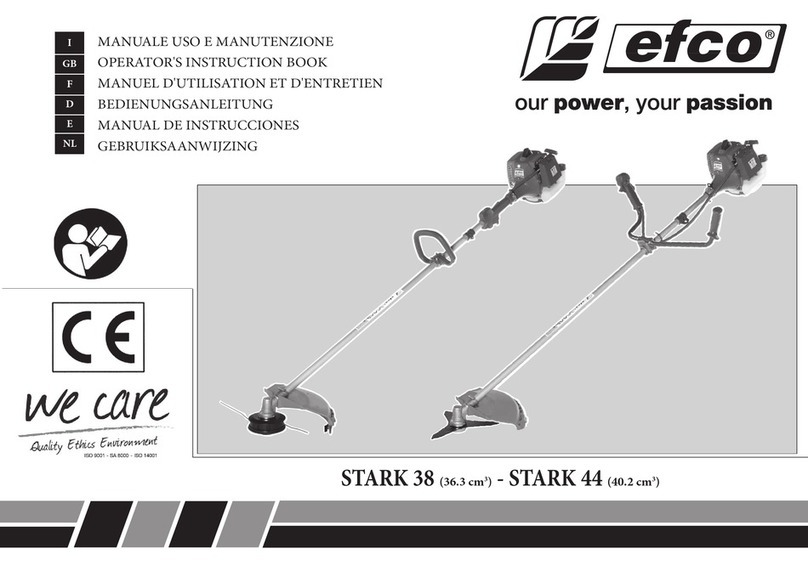
8ENGLISH
Save all warnings and instruc-
tions for future reference.
The term "power tool" in the warnings refers to your
mains-operated (corded) power tool or battery-operated
(cordless) power tool.
Trimmer safety warnings
1. Hold the power tool by insulated gripping
surfaces only, because the cutter may contact
its own cord. Cutting a "live" wire may make
exposed metal parts of the power tool "live" and
could give the operator an electric shock.
2.
Use clamps or another practical way to secure
and support the workpiece to a stable platform.
Holding the work by your hand or against the body
leaves it unstable and may lead to loss of control.
3. The trimmer bit shank must match the
designed collet chuck.
4.
Only use a trimmer bit that is rated at least equal
to the maximum speed marked on the tool.
5. Wear hearing protection during extended
period of operation.
6. Handle the trimmer bits very carefully.
7. Check the trimmer bit carefully for cracks or
damage before operation. Replace cracked or
damaged bit immediately.
8. Avoid cutting nails. Inspect for and remove all
nails from the workpiece before operation.
9. Hold the tool rmly.
10. Keep hands away from rotating parts.
11. Make sure the trimmer bit is not contacting the
workpiece before the switch is turned on.
12.
Before using the tool on an actual workpiece, let
it run for a while. Watch for vibration or wobbling
that could indicate improperly installed bit.
13. Be careful of the trimmer bit rotating direction
and the feed direction.
14. Do not leave the tool running. Operate the tool
only when hand-held.
15. Always switch o and wait for the trimmer bit
to come to a complete stop before removing
the tool from workpiece.
16.
Do not touch the trimmer bit immediately after opera-
tion; it may be extremely hot and could burn your skin.
17.
Do not smear the base carelessly with thinner, gaso-
line, oil or the like. They may cause cracks in the base.
18.
Some material contains chemicals which may be
toxic. Take caution to prevent dust inhalation and
skin contact. Follow material supplier safety data.
19.
Always use the correct dust mask/respirator for
the material and application you are working with.
20. Place the tool on stable area. Otherwise falling
accident may occur and cause an injury.
SAVE THESE INSTRUCTIONS.
WARNING: DO NOT let comfort or familiarity
with product (gained from repeated use) replace
strict adherence to safety rules for the subject
product. MISUSE or failure to follow the safety
rules stated in this instruction manual may cause
serious personal injury.
FUNCTIONAL
DESCRIPTION
CAUTION: Always be sure that the tool is
switched o and unplugged before adjusting or
checking function on the tool.
Adjusting trimmer bit protrusion
To adjust the bit protrusion, loosen the clamping screw
and move the base up or down as desired by turning
the adjusting screw. After adjusting, tighten the clamp-
ing screw rmly to secure the base.
► Fig.1: 1. Base 2. Scale 3. Bit protrusion 4. Clamping
screw 5. Adjusting screw
Switch action
CAUTION: Before plugging in the tool, always
be sure that the tool is switched o.
To start the tool, move the switch lever to the I position.
To stop the tool, move the switch lever to the O position.
► Fig.2: 1. Switch lever
Electronic function
The tool is equipped with the electronic functions for
easy operation.
Indication lamp
► Fig.3: 1. Indication lamp
The indication lamp lights up green when the tool is
plugged. If the indication lamp does not light up, the
mains cord or the controller may be defective. The indi-
cation lamp is lit but the tool does not start even if the
tool is switched on, the carbon brushes may be worn
out, or the controller, the motor or the ON/OFF switch
may be defective.
Unintentional restart proof
The tool does not start with the switch lever in I position
even when the tool is plugged.
At this time, the indication lamp blinks in red and shows
the unintentional restart proof device is on function.
To cancel the unintentional restart proof, return the
switch lever to O position.
Soft start feature
Soft-start feature minimizes start-up shock, and makes
the tool start smoothly.

